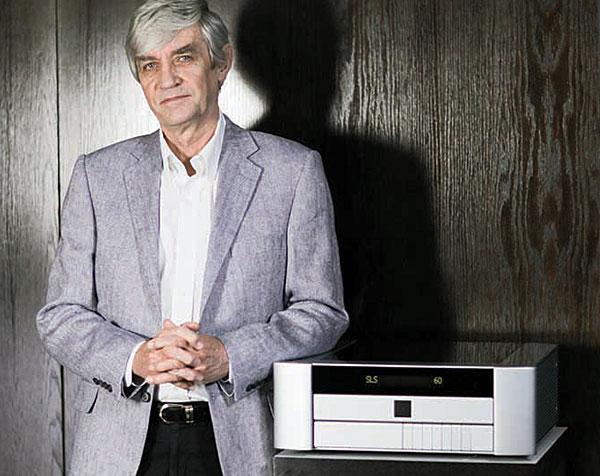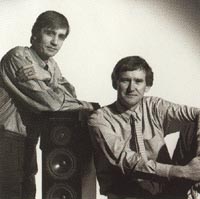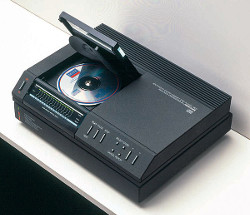Audio Statesman: Meridian Founder Bob Stuart

Genius, indeed. The soft-spoken pioneer is known the world over for developing the first digital active speaker, the first audiophile CD player, and the first digital surround processor in addition to inventing MLP (Meridian Lossless Packing) audio coding—the basis for Dolby TrueHD—and now MQA technology, which squeezes studio quality sound into a file small enough to be streamed over the Internet. “When we say MQA captures the actual sound of the studio, we really mean that,” Stuart says. These are just few highlights of a 40-plus-year career that is still going strong.
S&V: How did you get started in the audio business?
Robert Stuart: It’s something I wanted to do from a very early time. I had done a lot of playing around with radios and making bits and pieces of equipment—amplifiers, and those sorts of things. In fact, I built a tape recorder, a reel-to-reel machine. I was always fascinated by psychoacoustics—how the ear works, how the mind works, how we interpret sound—so I choose electronics engineering with acoustics for my first college degree. And when I left University I though, yeah, I want to design audio equipment.
 After my college degree I took a master’s degree in operations research. Fairly soon after that, in 1972, I got recruited into a startup called Lecson Audio. The guy who started it had this quite unusual idea of wanting to make sure the industrial design was right and he happened to bring in Allen Boothroyd and that’s when the two of us met. Three years later we started a design consultancy together. In 1976, Allen designed the case work for the world’s first calculator, which was made by Sinclair. After a couple years of that I thought, you know what, we should start our own hi-fi company, so we did. I always had a great interest in designing not just electronics but loudspeakers.
After my college degree I took a master’s degree in operations research. Fairly soon after that, in 1972, I got recruited into a startup called Lecson Audio. The guy who started it had this quite unusual idea of wanting to make sure the industrial design was right and he happened to bring in Allen Boothroyd and that’s when the two of us met. Three years later we started a design consultancy together. In 1976, Allen designed the case work for the world’s first calculator, which was made by Sinclair. After a couple years of that I thought, you know what, we should start our own hi-fi company, so we did. I always had a great interest in designing not just electronics but loudspeakers.
S&V: Tell me about was your first product.
Stuart: It was an active loudspeaker, the M1. It was unusual in that it had electronics built in. Back then nobody did that. Meridian sort of followed its own road. We always made speakers with electronics built in because we thought it was the better way to make a speaker. And it turned out to be quite successful for us.
 S&V: Meridian has had many milestones, including the first audiophile CD player, the MCD, in 1983. What was the thinking behind that player?
S&V: Meridian has had many milestones, including the first audiophile CD player, the MCD, in 1983. What was the thinking behind that player?
Stuart: All of the sources at that time were analog: FM radio, compact cassette, and vinyl records. They were all very frustrating because they were so unreliable—you couldn’t depend on them. They never sounded the same. And, although audiophiles could get quite a lot out of analog with the turntable, the average person did not. Right from the beginning, CD had a couple of things that were massively important to the average user. The discs were durable, the players had a pause button, and you didn’t have to rewind. We had been doing research into digital in the late ’70s, so by the time CD came along we already knew what made digital good and what made it not good. You could see that the way players were being made there was no sensitivity to audio. Our view was we can make this sound massively better. So we did the engineering.
We had been doing research into digital in the late ’70s, so by the time CD came along we already knew what made digital good and what made it not good. Our view was we can make this sound massively better. So we did the engineering.
By the time we got to the third generation of our player, we had done all the software inside it and built up tremendous expertise on playback and digital processing—improved converters and so on. It was a steady climb.
S&V: And you got great accolades from the audiophile press at the time for improving the CD player…
Stuart: Yeah, and not only the audiophile press but the consumer press. And in Japan we got Best CD player award in the country that supposedly invented it.
 S&V: In 1990, Meridian introduced the first DSP-powered speaker, the DSP6000, which was a radical departure from speakers of the day. Tell me about its genesis and legacy of that product.
S&V: In 1990, Meridian introduced the first DSP-powered speaker, the DSP6000, which was a radical departure from speakers of the day. Tell me about its genesis and legacy of that product.
Stuart: There were two threads to it. One was the digital part. As we were moving along we were improving how to play back CD. But around 1989, three things came together. One was we were able to get sensible DSP chips [that enabled us to] manipulate the signal in the digital domain. Another was the arrival of the SPDIF interface, a way of moving digital from one box to another. Prior to that there was no method. And the third was the continuing development of our loudspeakers where we were making powered speakers with separate amplifiers for each drive unit. So you had a power amp for the tweeter, a power amp for the midrange, and one for the woofer. Instead of having an electronic crossover, we figured out we could do a digital crossover and have a separate DAC (digital to analog converter) for each unit and that would give us tremendous control, power, and transparency. We first showed the digital speaker in Chicago in 1990.
At the same time, in parallel, we were working at how to make good sounding signal processing... In another part of the product line we were in the very beginnings of surround processors because Meridian also made the first home theater processor in the digital domain [the Meridian Digital Theatre, introduced in 1994, was based on an earlier processor, the Model 565 Surround Sound Decoder]. As soon as we got the signal processing working and we got more power we could do things like Dolby Digital and all the things that became important for home cinema: equalization, calibration, and all the different [listening] modes. It all seems like yesterday.
S&V: What generation of speaker are you on with the digital series?
Stuart: In terms of the flagship product, Meridian introduced the DSP6000 in 1990 and the DSP8000 in 2000—and that model is still in production. The 6000 probably went through three versions of electronics as it got more effective and more efficient. It was around 2000 that we introduced the ability to do what is now called high resolution—you know, sampling rates of 96,000 kilohertz.
In between there were a lot of other models—lower priced models, smaller ones—but in terms of the generation, the 8000 has been through three major revisions. If you bought a DSP8000 in 2000 it can be updated today. The same is true for the 800 series [of card-based modular electronics] we introduced in 1997. The series is still in production today and still uses the card frame architecture, [which enables a component to be easily upgraded by changing cards].





























































